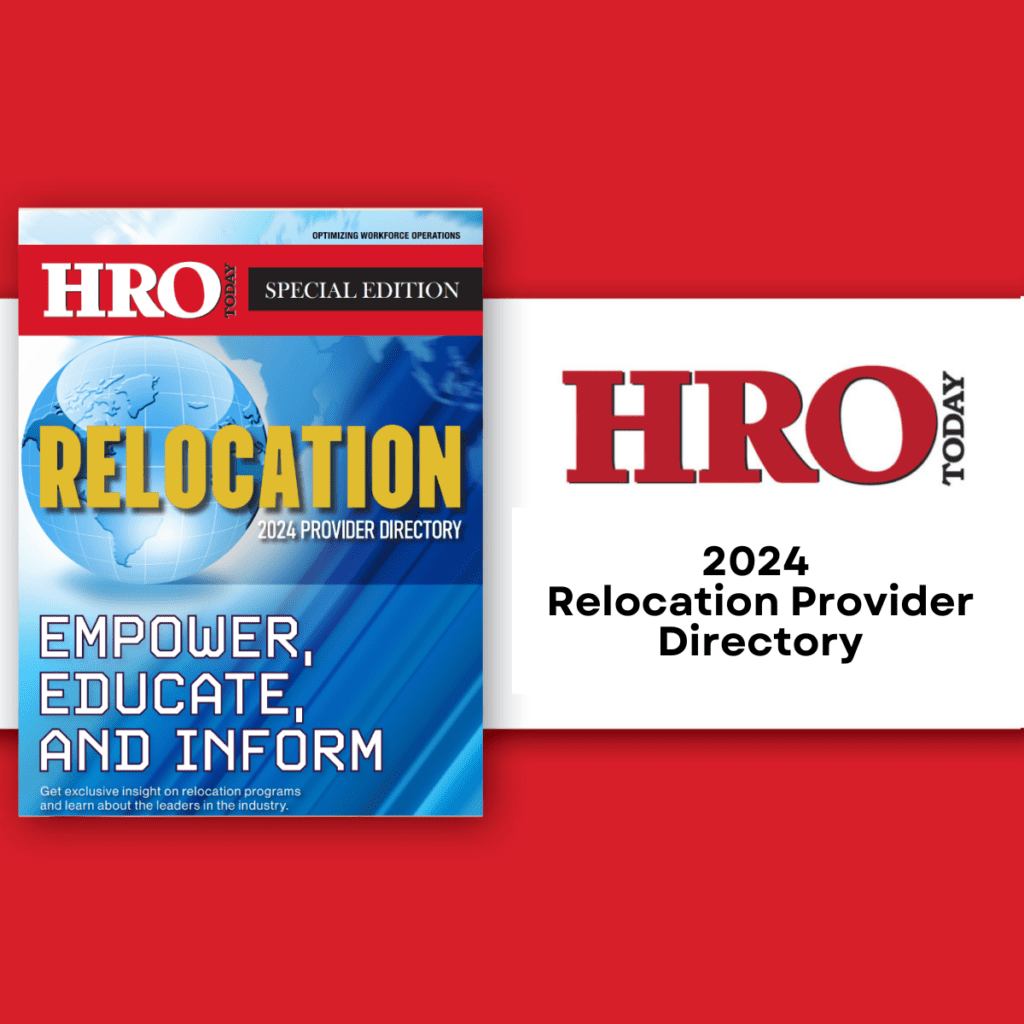In today’s competitive business environment, mobility is more than just relocating employees to new markets. It means creating a global business plan around the drivers and goals for annual relocations -and seeing beyond the bottom line in terms of measuring the efficacy of mobility programs.
Unfortunately, there is often a disconnect between global mobility efforts and larger organizational objectives for talent management, especially within large companies. This can make strategic, talent-oriented actions, such as hiring and benefit management, difficult to synergize. There are several reasons for this disconnect, including a divided understanding of the purpose of global mobility function. In fact, new research from Brookfield Global Relocation Services suggests that while 46 percent of employees say that the primary role of global mobility is to support and serve relocated employees, another 44 percent believe that global mobility mainly exists to provide expert advice to stakeholders throughout the company.
The reality is that relocation should be working in both of these ways -and the expectations placed on global mobility professionals are only growing and becoming more strategic. So where does the process of alignment begin? A good place to start is by identifying the greatest barriers to alignment and crafting long-term solutions. Here are just a few of the problems that keep mobility and talent management disconnected -and ways to solve them.
Communicate. As in any sector of business, effective global mobility programs rely on communication between the people in charge of implementing the talent agenda -in this case, relocated employees -and the people in charge of creating that agenda -the senior-level HR staff at corporate. As long as professionals in these two areas are on the same page, long-term strategy can remain at the forefront. But without this communication, the implementation of organization-wide goals will suffer.
“In many cases, there aren’t a lot of engagements or opportunities to build dialogue and relationships [with relocated employees],” says Bill Graebel, owner and CEO of Graebel Relocation. “Companies are so large that the leaders of various functions, good-natured as they are, don’t really know who’s who in terms of who they should be having those dialogues with between corporate and line management and, to even take it further, in units that are outside the headquarter country locations.”
The lack of communication between external business units and corporate can mean that relocated employees make talent management and acquisition decisions autonomously and are largely left out of organizational strategy in these areas. To remedy this, organizations should consider making structural changes that allow globally mobile employees to report directly to talent management.
Keeping mobile employees in direct and regular contact with talent management ensures that they never lose sight of the organizational mission and always feel like they are a part of the corporate community. This strategy also gives talent management a better understanding of relocated employees’ needs, concerns, and potential for contribution.
“In last year’s survey, we saw evidence that companies with direct reporting links to talent management had implemented processes that support a more mindful set of practices around expatriation,” says Diane Douiyssi, director of consulting services at Brookfield Global Relocation Services. “For example, where global mobility reports into talent management, significantly more companies require a statement of the assignment objectives and business justification at the outset of an international assignment than companies that don’t have this direct reporting relationship. These companies also tend to have formal career management processes in place and measure ROI more often than those that have mobility report directly to other departments.”
Research and reprioritize. Why are mobile employees so out of alignment to begin with? The answer lies in their numbers. Global mobility is typically a very small segment of the workforce, and their lack of representation means that they often fly under the radar of HR’s priorities.
To alleviate this problem, Graebel suggests that organizations make global mobility a higher priority and work to highlight its strategic value through research and data sets. “In many cases, that intersection of talent mobility and talent management hasn’t hit the cut line of a must-win battle because for years, there hasn’t necessarily been a need for a strategic lens on those things,” he says. “On a tactical basis, [global mobility] is a function of the war for talent that exists in so many industries, and on a strategic basis, it relates to sustainability and competitiveness. The challenge is picking the right data sets to really lock in on…and [to do that] you need to start looking at the critical data to know who and when and where and why that company relocates its employees.”
Once companies have gathered critical information about the goals for relocation, employee productivity while on assignment, as well as the cost effectiveness of their trip, it will be easier to ascertain the strategic importance of relocated employees and the need for better alignment.
Relocate strategically. Quality of hires can also be a source of woe when it comes to keeping everyone on the same page. When candidates for relocation are selected based on demonstrated performance alone, they may have a hard time making the transition into their new roles.
“One of the most neglected areas of global mobility support is on the front end of international assignments,” Cici Franchi, MSI Mobility’s senior director of global consulting and advisory services explains. “Too often, candidates are chosen quickly without adequate decision making based exclusively on the required work-related skills, without giving adequate consideration to cultural adaptability, global readiness, and preparedness.”
An international assignment is often viewed as a perk and a unique opportunity to hone and develop professional skills, but not all employees are in the right position personally or professionally to take on the challenges that come along with it.
For example, an employee who has spent several years with the company and attained a deep familiarity with its culture might seem like an obvious candidate to represent the organization from afar, but if that employee has never had a leadership role or been outside of the headquarter country, they may not have the necessary skills for a mobile assignment.
“The experience and professional maturity of the employee will be a more important variable for consideration for relocation than actual time spent with the company,” says Ivana Gibson, vice president of client management for MSI. In addition to taking adaptability and leadership into account, managers should factor in family situation, familiarity with the new location and culture and, of course, the employee’s feelings about the assignment. Does the candidate have young children or responsibility for a sick family member that may make a relocation difficult to manage? Do they speak the language or understand the culture in the area they’d be moving to? Are they excited for the opportunity or just sweating the details?
An employee that feels adequately prepared emotionally and professionally for their assignment will adjust to their new surroundings more quickly and be able to spend more time working strategically to achieve talent management goals. Needless to say, the process of selecting these candidates from the existing talent pool -or in some cases recruiting them -should look different than the process of hiring a traditional employee or selecting someone for a promotion.
Plan for repatriation: For most globally mobile employees, their time on an assignment is temporary, yet inadequate planning for repatriation can make them feel separate from the rest of the team -and from its talent goals -when they do return.
“Employees who no longer feel valued upon their return -whether it is because their former job no longer exists and/or because they feel that no one values their experience -often leave their companies within a year or two of their return,” Franchi says. “Many also end up working for competitor companies, where they can leverage the knowledge and skills gained while on assignment abroad.”
The goal of a relocation is that the employee would serve an essential function in their new location and return with important knowledge and experience that will grow their organization’s business opportunities and success. If that knowledge is underutilized upon repatriation, then the entire relocation becomes a waste of both time and money.
In this way, making repatriation planning an ongoing process that begins pre-assignment and continues after the employee returns is a matter of maximizing return on investment.
“The pre-assignment stage is actually the optimal time to plan an employee’s repatriation,” Gibson says. “To ensure a successful repatriation, employers should begin with the end in mind and clearly articulate the assignment’s purpose to the employee and the company’s expectations for him or her upon return as early on as possible. Will there be a return to the same job, a lateral transfer, or a promotion? Long-term career planning is critical.”














